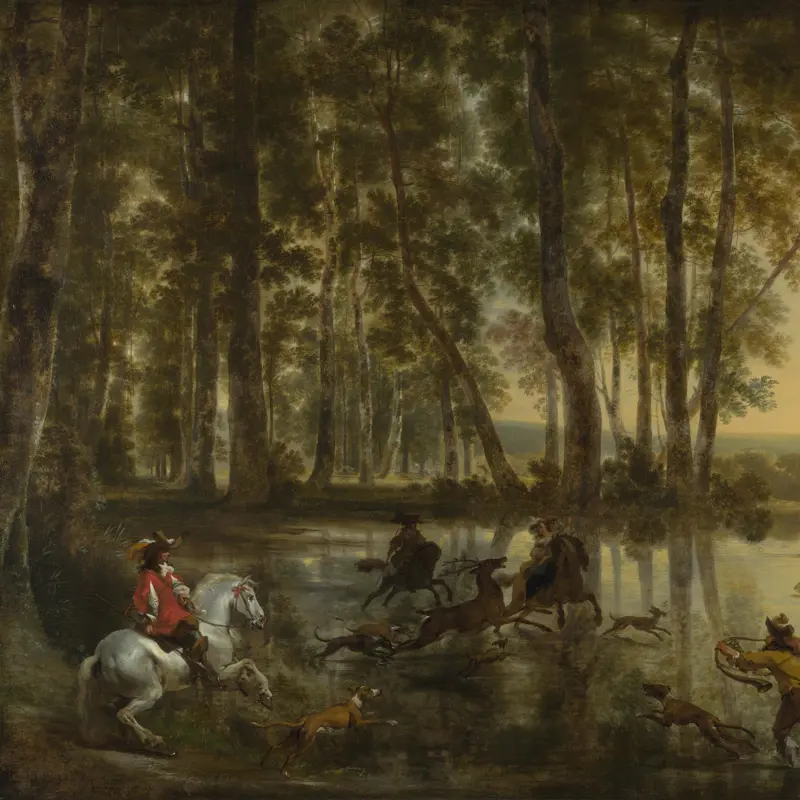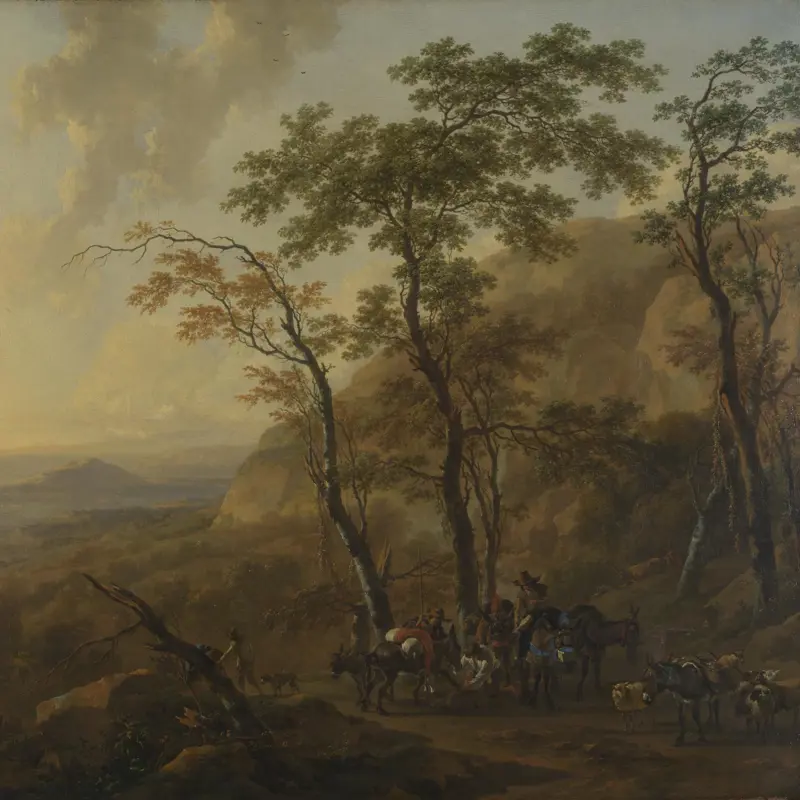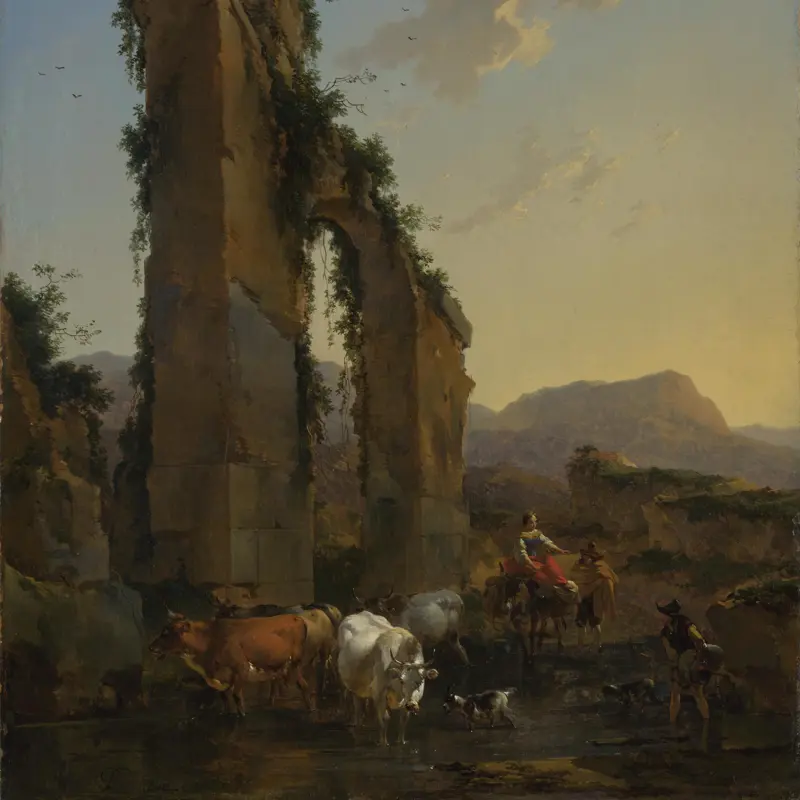Nicolaes Berchem, 'A Man and a Youth ploughing with Oxen', probably 1650-5
About the work
Overview
There is a rough grandeur in Berchem’s picture. The oxen are fine animals, well muscled and rich in colour. The man is strong, windswept and sunburnt. His massive arms labour at the primitive plough; his shirt is shabby, but gleams white and clean in the sun. He leans back in a huge effort to shove the plough forward over the last lip of the hillside, digging in hard to have some effect on the unyielding soil.
The scene would have been admired for itself, but also hints at the fortitude of the Dutch peasants who worked the land of the newly founded Dutch Republic. At the time that Berchem painted his picture, these same peasants were – with monumental effort and grinding labour – creating new stretches of land from the sea through digging ditches and dykes.
Key facts
Details
- Full title
- A Man and a Youth ploughing with Oxen
- Artist
- Nicolaes Berchem
- Artist dates
- 1620 - 1683
- Date made
- probably 1650-5
- Medium and support
- oil on canvas
- Dimensions
- 38.2 × 51.5 cm
- Inscription summary
- Signed
- Acquisition credit
- Wynn Ellis Bequest, 1876
- Inventory number
- NG1005
- Location
- Room 27
- Collection
- Main Collection
- Previous owners
- Frame
- 20th-century Replica Frame
Provenance
Additional information
Text extracted from the ‘Provenance’ section of the catalogue entry in Neil MacLaren, revised and expanded by Christopher Brown, ‘National Gallery Catalogues: The Dutch School: 1600–1900’, London 1991; for further information, see the full catalogue entry.
Exhibition history
-
2015Class Distinctions: Dutch Painting in the Age of Rembrandt and VermeerMuseum of Fine Arts, Boston11 October 2015 - 18 January 2016The Nelson-Atkins Museum of Art20 February 2016 - 29 May 2016
Bibliography
-
1907C. Hofstede de Groot, Catalogue Raisonné of the Works of the Most Eminent Dutch Painters of the Seventeenth Century, 10 vols, London 1907
-
1907C. Hofstede de Groot, Catalogue Raisonné of the Works of the Most Eminent Dutch Painters of the Seventeenth Century, 10 vols, London 1907
-
1960Maclaren, Neil, National Gallery Catalogues: The Dutch School, 2 vols, London 1960
-
1983C. Wright, Dutch Landscape Painting (exh. cat. Laing Art Gallery, 13 October - 3 December 1983), Newcastle upon Tyne 1983
-
1991Maclaren, Neil, revised by Christopher Brown, National Gallery Catalogues: The Dutch School, 1600-1900, 2nd edn (revised and expanded), 2 vols, London 1991
-
1992R. Trnek, Die hollandischen Gemälde des 17. Jahrhunderts, Vienna 1992
-
1997W. Loos, On Country Roads and Fields: The depiction of the 18th and 19th Century Landscape (exh. cat. Rijksmuseum, 28 November 1997 - 3 March 1998), Amsterdam 1997
-
2001
C. Baker and T. Henry, The National Gallery: Complete Illustrated Catalogue, London 2001
About this record
If you know more about this work or have spotted an error, please contact us. Please note that exhibition histories are listed from 2009 onwards. Bibliographies may not be complete; more comprehensive information is available in the National Gallery Library.





